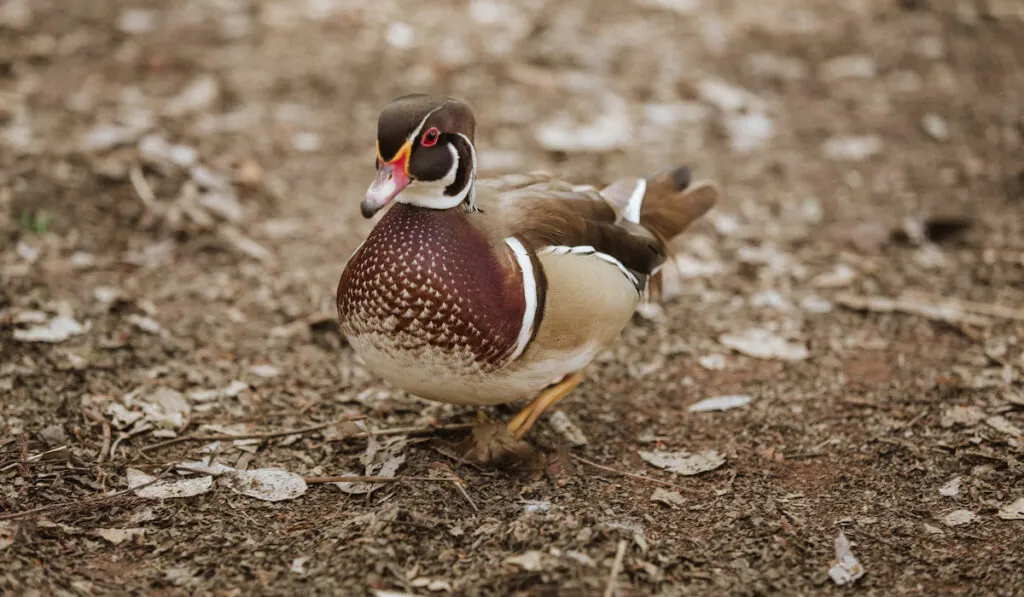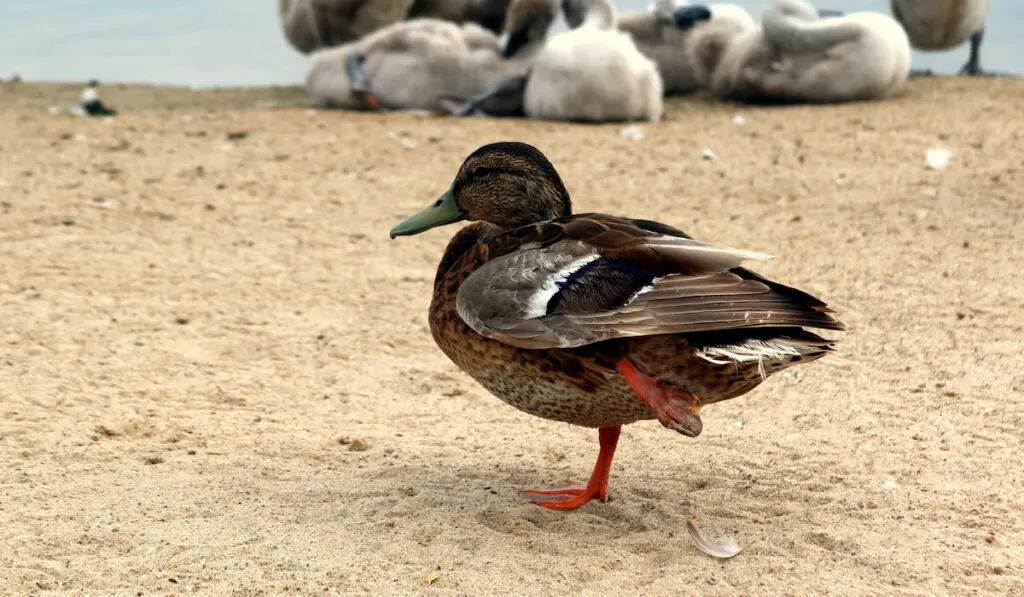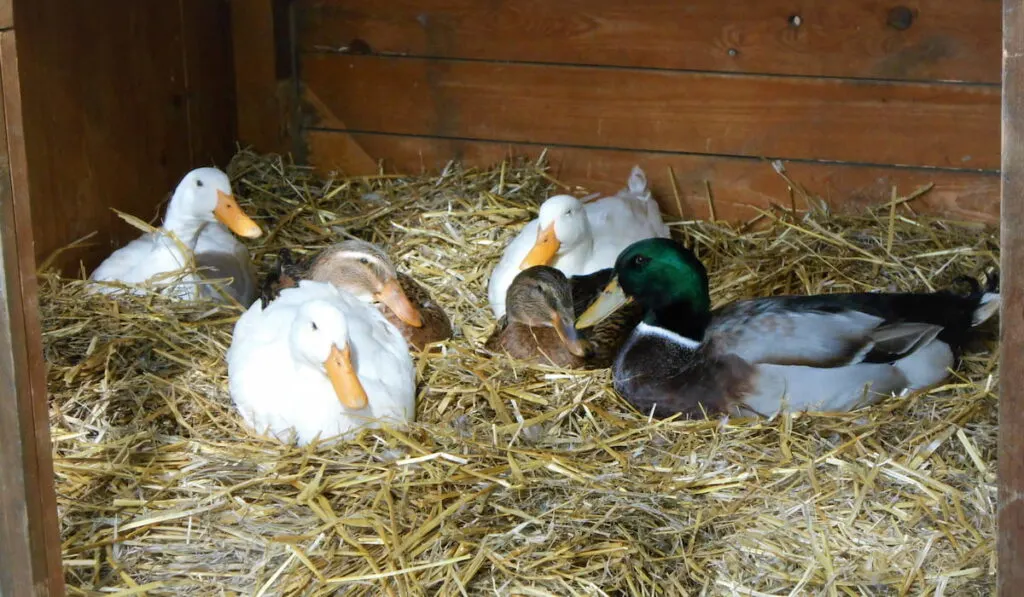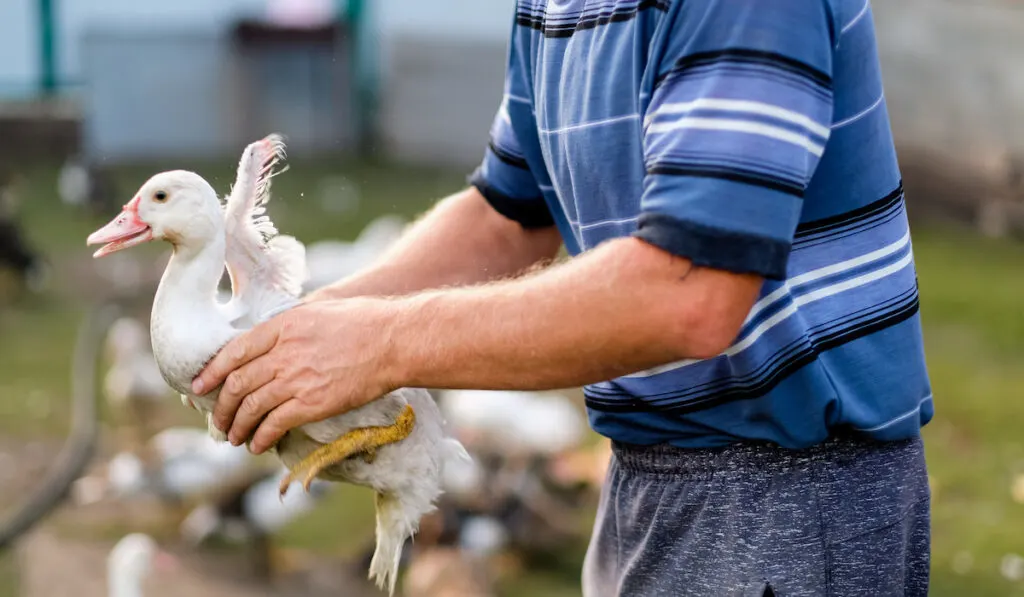If you’re raising any animal, of course you want to do your best to keep them safe, happy, and healthy. No one likes seeing any animal hurt, much less an animal that you’ve spent hours, weeks, and years carefully nurturing.
Raising ducks can be challenging because these are active animals that, at times, can run into health problems that affect their movement. When an animal, like a duck, has a leg injury, it can be very serious because of how important moving is to swimming, eating, and nesting.

If you notice that your duck is limping around, you may need to take action quickly to help them with their hurt leg. What you do, and how soon you do it, will improve their chances of returning to normal condition and living a longer, more full life.
Here are some things that can cause a duck to limp and what you can do to treat them.
Table of Contents
5 Things That Can Cause a Duck to Limp
Why would a duck drag a leg or limp around? First of all, it’s important to remember that not all injuries are visible. It’s easy to spot a cut or sores on your duck’s feet, but the limp could be caused by something else.
Here are some common injuries that cause ducks to limp
- Cracked Legs – Depending on where you live, what the climate is, and what time of year it is, your duck’s legs could grow dry to the point where their webbing or legs crack. That can be incredibly painful. Ask a human who has moved to a drier climate and had a foot callus crack. Usually, the crack develops inside the skin and moves outward, and it can hurt a lot.
Keep an eye on your duck to track whether their skin is turning too dry. You’ll start to see flakes or small pieces of skin start to peel off. In worse cases, larger cracks can start forming in the feet and leg area. - Mites – If your duck’s legs are peeling but you don’t see dry skin, it could be something worse than just the climate. Leg mites love to find ducks and burrow into their legs where they eat and multiply. This can be very irritating for a duck, understandably, and you may notice them constantly pecking at irritated areas.
- Bumblefoot – This is a condition common to ducks and many other captive birds. With bumblefoot, ducks experience significant inflammation in a foot that causes it to grow larger and become less mobile. It will be obvious if your duck has bumblefoot, and they will have a noticeable limp.
The duck’s overall health and the environment where they live contribute to bumblefoot. Sometimes it is also attributable to carrying too much weight or the presence of a parasite. - Foot Injury – Ducks are used to swimming in all sorts of lakes, streams, rivers, and other bodies of water. Sometimes the water is clear, and other times it’s murky. When a duck can’t see where they are swimming, it becomes easier to snag a foot on a log or a rock. They may cut it on an old fishing hook or a piece of glass.
If serious enough, your duck’s leg may be broken. Can a duck survive a broken leg? Yes. Ducks are resilient animals, and many of them will walk around with a broken leg as best they can. - Infection – If a duck is limping around because they scraped their foot on a rock, that’s one thing. However, if they cut their leg or their foot and an infection sets in, it could cause them to limp around for weeks or months.
A bad infection can even be fatal. It’s vital to monitor the health of your duck if you find that they have an obvious injury.

What Would Cause a Duck to Not Be Able to Walk at All?
If you’re lucky, any injury to your duck’s leg will be relatively minor and your animal will return to normal health with a bit of time and rest.
However, sometimes duck owners notice a bit of a limp that progressively gets worse until the duck can no longer walk. When this happens, it could be due to a serious injury, but illness is the much more likely conclusion.
They will likely need fast medical attention if they are to survive.
7 Things You Can Do to Help a Duck
1. Catch the duck
You’re going to need to see the leg or foot up close to find out what’s going on.
Don’t just let your duck limp around because it may get worse with time. Catching a duck can be tough, so do your best to catch the injured duck in a calm way that doesn’t stress the bird too much.
Once you have it, you can take a look and get a better idea of what’s happening.
2. Talk to Your Vet
This, of course, is always a good course of action anytime you’re concerned about an animal. You can take the bird to the vet, or take some pictures and video of the injury/limp and send it to the vet.
They will be able to take a look and make some recommendations or tell you if they need to see the duck for an examination.
3. Clean the Pen
Some leg injuries are caused by parasites and infections from walking on and nesting around duck droppings all day.
If you want your duck’s health to improve, do your best to keep their living spaces clean. These are outdoor animals, so it’s understandable there will be some mess, but keeping a clean pen will help.

4. Make Things Easier
If your duck is noticeably limping, you can make things easier for them by limiting the distances they have to walk.
Bring food and water closer to them, and think about isolating them in a place where they won’t be bothered by other birds or feel the need to keep up with the rest of the animals.
Resting the injury is one of the best things that you can do.
5. Remove Any Threats
Sometimes ducks limp because they have a splinter or get some fishing wire wrapped around their leg.
Once you catch the duck, remove anything that could be irritating them or affecting the way that they walk.
6. Antibiotics
Infection, swelling, and other injuries sometimes can only be cured with medical intervention.
Your vet can get you antibiotics that will fight back against inflammation and eradicate an infection. Not only will it make the duck feel better, it will reduce the time required to heal.
7. Give a Massage
Sometimes ducks limp when they are too close to other ducks and get hit in the hip. Their legs tighten up and they have a hard time moving around.
This may surprise you, but a quick massage can often do the trick to loosen up tight muscles and get them walking normally again.

Ducklings With Leg Injuries
Are ducklings treated differently? They should be. Ducklings can experience many of the same problems as adult ducks that would cause them to limp, but they also have issues that are unique to younger birds.
Some of the most common reasons ducklings limp are:
- Injury while learning to walk
- An attack by an older bird
- Getting stepped on by a larger bird
- Spraddle leg (splay leg)
For the first three problems, you can avoid injuries and treat injuries by isolating the ducklings until they are feeling better and recovered from their injuries.
The only exception here is with spraddle leg. This condition requires physical therapy to make the legs stronger.
By tethering the duckling’s legs together or using a piece of foam to ensure proper leg distancing, you can start training the duckling how to walk properly.
Resources
- https://bestautomaticchickendoor.com/how-to-help-a-duck-with-a-hurt-leg/
- https://farmhouseguide.com/reasons-your-duck-is-limping/
